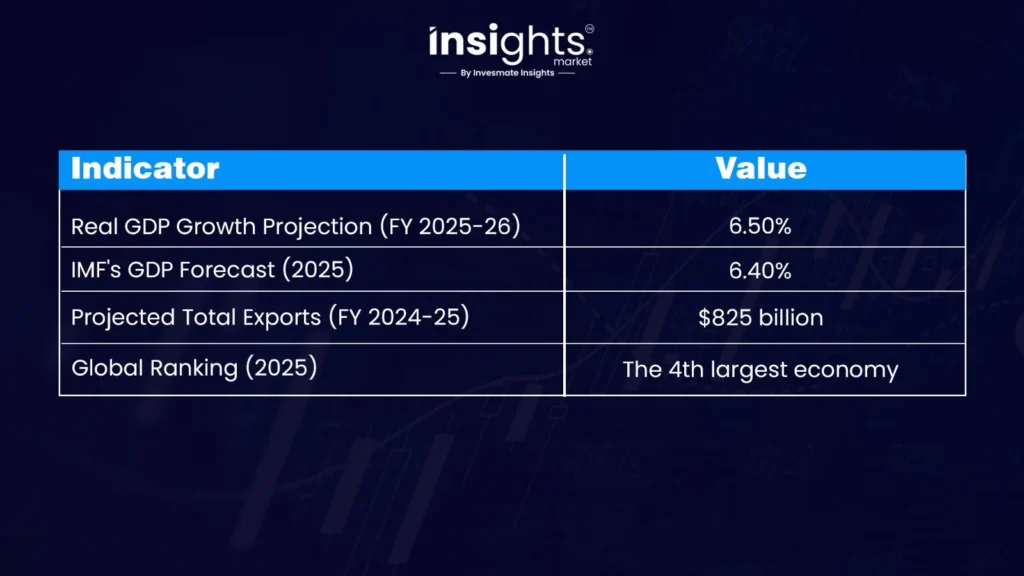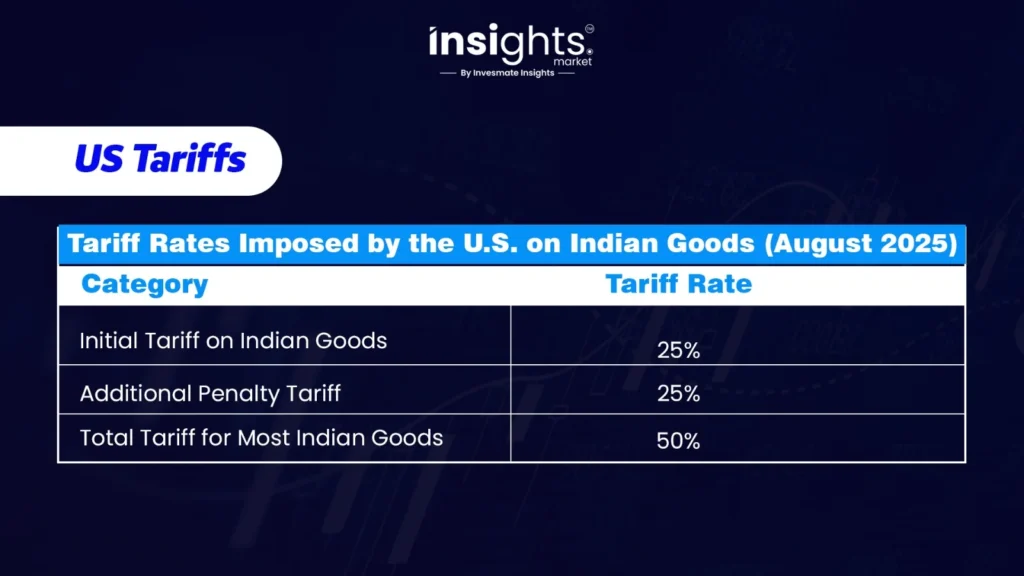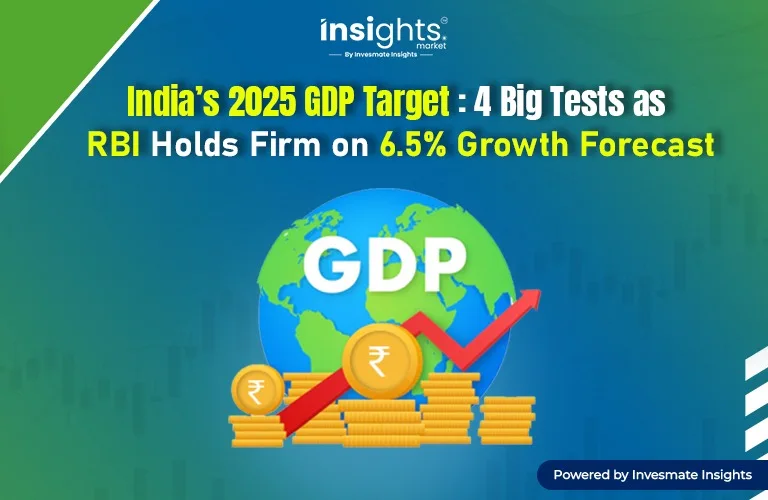![]()
RBI Keeps Growth Forecast at 6.5% — Four Challenges for India’s Economy The Reserve Bank of India (RBI) is holding its GDP growth forecast for 2025–26 steady at 6.5%.
The following table provides a quick overview of the key economic indicators that form the foundation of the RBI’s optimistic forecast.

In simple terms, the central bank believes the country’s economic “engine” is running smoothly.
Right now, India is moving forward thanks to strong farm yields. A good monsoon, big public spending on roads and infrastructure, and growth in services are all helping.
Alongside these domestic tailwinds, India is also keeping a close eye on the global stage. On 15th August 2025, the United States and the Russian Federation are scheduled to meet in Alaska — a development that India has publicly welcomed.
If this dialogue leads to a breakthrough, it could help calm global markets, ease energy price volatility, and bring more predictability to trade — factors that would feed directly into India’s growth outlook.
But just like a train speeding ahead, the journey could get bumpy at certain curves in the track.
Here are four key areas that could determine how well India maintains its pace.
Foreign Funds Pulling Out

The Capital Outflow Challenge
Imagine foreign investors as passengers with heavy bags of cash on our train.
If they all decide to hop off at once, that’s a capital outflow. We saw signs of this earlier this year when policy changes in the US and China made global investors cautious. Such exits can weaken the rupee and jolt stock markets.
The good news? Domestic investors have stepped up, cushioning the fall. Their growing presence shows India’s savings pool is becoming a real shock absorber. But if the global mood turns sour again, markets could still feel the tremors.
Job Cuts in IT
Clouds Over the Tech Hub India’s IT sector has been a beacon of hope, providing many jobs and a path to success for young workers. Lately, however, the mood has darkened. Industry giants like TCS have laid off thousands, with more cuts possibly ahead.
When the tech workforce tightens its belt, spending slows, whether on cars, homes, or gadgets. In cities rich in tech, such as Bengaluru and Hyderabad, property prices are starting to drop. If the slowdown deepens, it could dent the urban consumption story India has long relied on.
US Tariffs

Trading Headwinds with a Key Partner The US recently slapped a 25% import duty on several Indian products, from textiles to gems. For exporters, that’s like being told they must pay extra just to enter a familiar marketplace. The move is linked, in part, to Washington’s unease over India’s oil trade with Russia.
This puts India in a tricky spot. It wants affordable energy deals, but it must also keep strong trade ties with a major customer.
Global Trade Uncertainty
The Export Wildcard Selling to the world has become more unpredictable. Shipping lane conflicts, sudden tariff changes, and political issues make long-term export planning hard. It’s now a guessing game.
If commodity prices—especially oil—shoot up, India could face higher import bills, a weaker trade balance, and more inflation pressure.

How India Plans to Tackle It
The government has rolled out a ₹20,000 crore Export Promotion Mission to help Indian goods gain a stronger footing in global markets. The RBI, for its part, is keeping policies flexible, ready to react quickly if conditions change.
Plans to help small businesses, boost digital trade tools, and explore new export markets are already in place.
What It Means for You
For the average citizen, this is not a call to panic—but it is a moment to watch the road ahead. The backbone of growth, farmers, construction workers, and small business owners, remains sturdy.
If jobs grow beyond IT and exports discover new markets, India can tackle these challenges while keeping its momentum. The next few months will reveal whether these hurdles are passing clouds or signs that the economy must adjust its sails.
FAQs
The RBI has retained India’s GDP growth forecast at 6.5% for the fiscal year 2025-26, signaling confidence in the economy’s resilience despite global uncertainties.
Four key factors include risks of capital outflows, layoffs in the IT sector, escalating US trade tariffs on Indian exports, and broader export uncertainties due to geopolitical tensions.
Capital outflows mean foreign investors pulling money out of India, which can pressure the currency and financial markets. However, strong domestic investor participation has helped buffer these impacts recently.
The IT sector employs millions and supports urban consumption and real estate markets. Job cuts affect consumer spending and can slow down economic growth, especially in tech-driven cities.
The US has imposed 25% tariffs on several Indian goods, threatening key export sectors like textiles and gems & jewellery. This may reduce export revenues and impact GDP growth.
The government has launched a ₹20,000 crore Export Promotion Mission to support exporters, diversify export markets, and boost competitiveness, alongside ongoing support for MSMEs and digital skill development.
RBI maintains a ‘neutral’ monetary stance, keeping the repo rate steady at 5.5%, while remaining flexible to adjust based on inflation and growth data. Inflation is forecasted to rise moderately, warranting caution.




